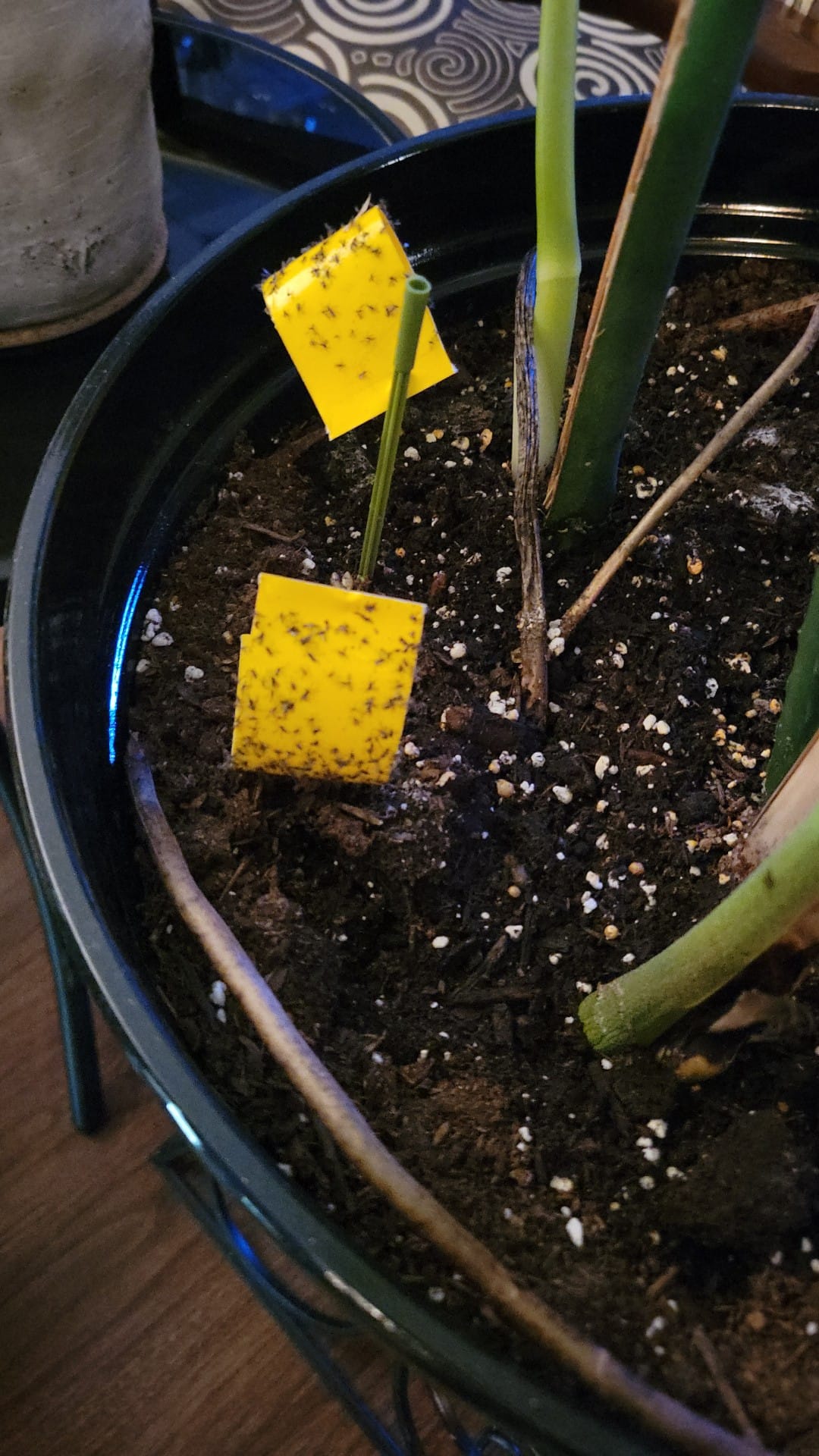
Have you noticed a swarm of miniature helicopters buzzing around your beloved houseplants? Those, my friend, are fungus gnats, and their presence is less “adorable insect friends” and more “annoying infestation.” But fear not, fellow plant parent! We can banish these gnatty gremlins without resorting to harsh chemicals. Here’s your guide to reclaiming your plant paradise with eco-friendly methods.
This post may have affiliate links. This means that sometimes when you click a link on our site and make a purchase on Amazon, we may earn a small commission at no additional cost to you. We only recommend products we truly believe in, and your support helps keep us running!
Understanding the Enemy: The Gnatty Lowdown
Fungus gnats, despite their name, aren’t actually drawn to your plants themselves. They’re more interested in the damp, organic buffet lurking beneath the surface – the potting soil. This moist environment is the perfect breeding ground for their larvae, which munch on decaying organic matter. While adult gnats are a nuisance, it’s the unseen larvae that can harm your plants by damaging their roots.
Cutting Off the Food Source: Starving Out the Gnat Gang
The key to eliminating gnats lies in making their home a less hospitable environment. Here’s how to break the gnat buffet:
- Water Wisely: Overwatering is the root (pun intended) of the problem. Gently stick your finger into the soil – if it feels moist to the touch, hold off on watering. Aim to water deeply when the top inch of soil feels dry.
- Drainage is Key: Ensure your pots have drainage holes to allow excess water to escape. Sitting water creates a gnat lagoon – not a good look for your plants or your home.
- Revamp the Soil: Consider repotting your plants with fresh, well-draining potting mix. This removes existing gnat eggs and larvae lurking in the old soil.
Natural Warfare: Eco-Friendly Gnat-Busters
Now that you’ve cut off the gnats’ food source, let’s get proactive with some natural deterrents:
- The Vinegar Trap: A classic for a reason! Fill a shallow dish with apple cider vinegar, a drop of dish soap, and a sprinkle of sugar. The gnats are lured in by the sweet and sour scent, but the soapy water becomes a one-way ticket to a gnatty demise.
- The Potato Powerhouse: Slice a raw potato and lay the pieces flat on the soil surface. Fungus gnat larvae find potatoes irresistible. Replace the potato slices every few days, disposing of the old ones with their hitchhiking larvae.
- The Cinnamon Sprinkle: This fragrant spice isn’t just for desserts! Cinnamon has natural insecticidal properties. Lightly sprinkle the top of your soil with ground cinnamon to deter egg-laying female gnats.
- Beneficial Nematodes: These microscopic warriors are your plant’s natural defense system. These tiny nematodes hunt down and devour gnat larvae in the soil, offering a long-term solution.
Creating a Gnat-Free Future: Preventative Measures
An ounce of prevention is worth a pound of gnat-catching! Here’s how to keep those pesky gnats at bay:
- Quarantine New Arrivals: Before introducing new plants to your collection, isolate them for a few weeks to ensure they aren’t harboring any gnatty passengers.
- Keep it Clean: Eliminate any potential breeding grounds for gnats outside your pots. Regularly clean up fallen leaves and decaying organic matter around your plants.
- Monitor Regularly: Keep an eye out for signs of gnats, like tiny flying insects or larvae wriggling in the soil. Early detection is key to preventing a full-blown infestation.
Living in Harmony with Your Houseplant Haven
By employing these eco-friendly methods, you can create a happy, healthy environment for your plants, free from the tyranny of gnats. Remember, consistency is key! Be patient and persistent with your gnat-battling techniques, and soon, your plants can thrive without the unwelcome attention of these miniature marauders. So, grab your watering can (but use it sparingly!), unleash your inner gnat-fighter, and enjoy the peaceful companionship of your flourishing indoor jungle
